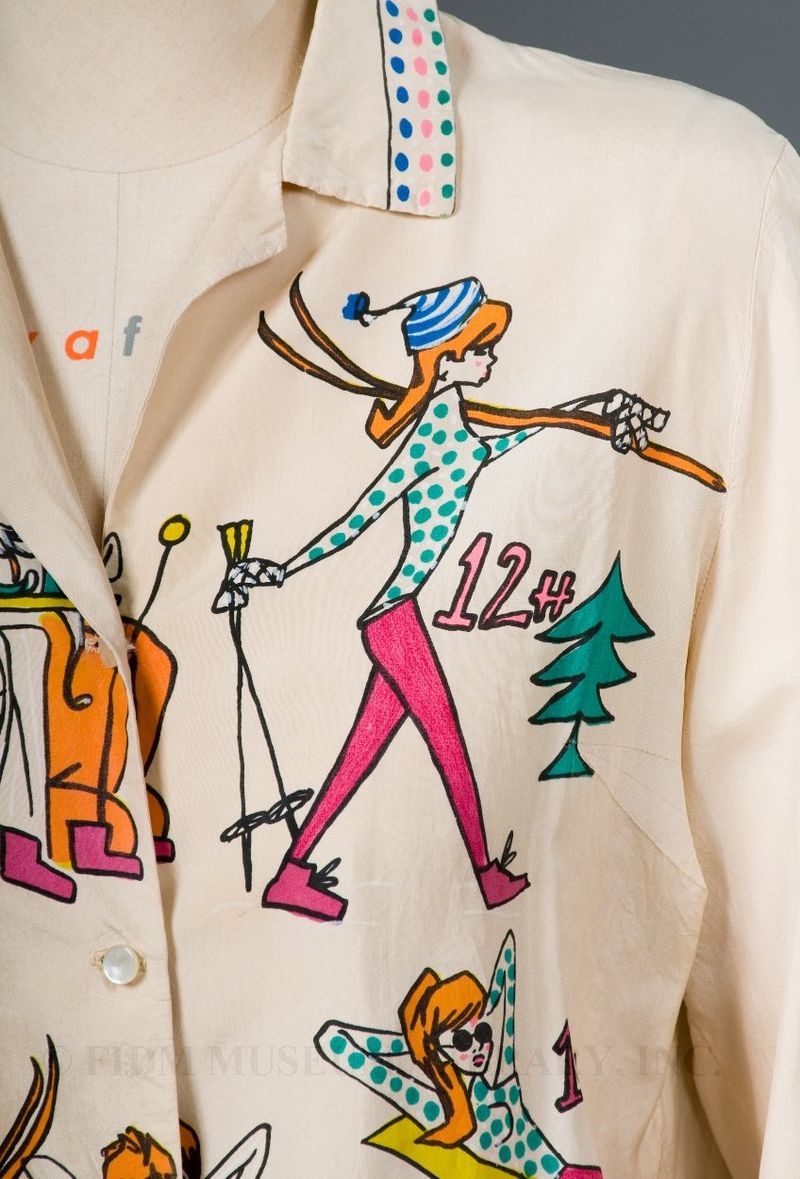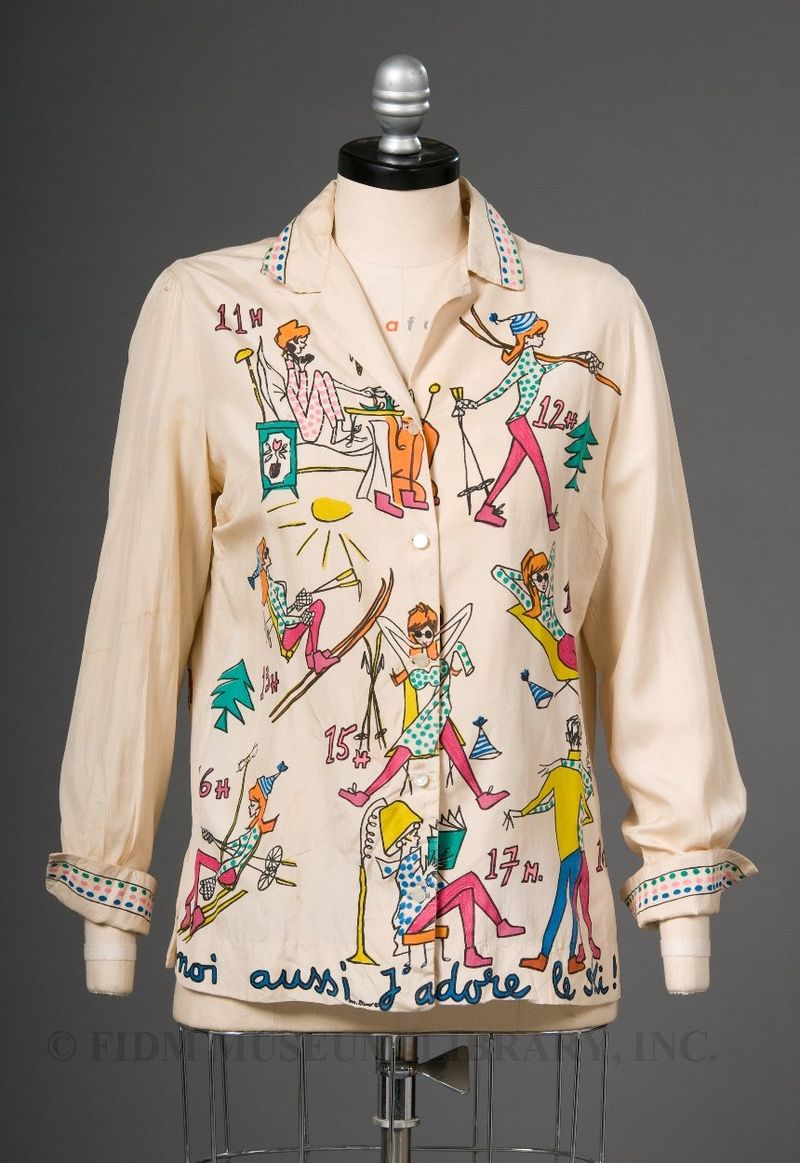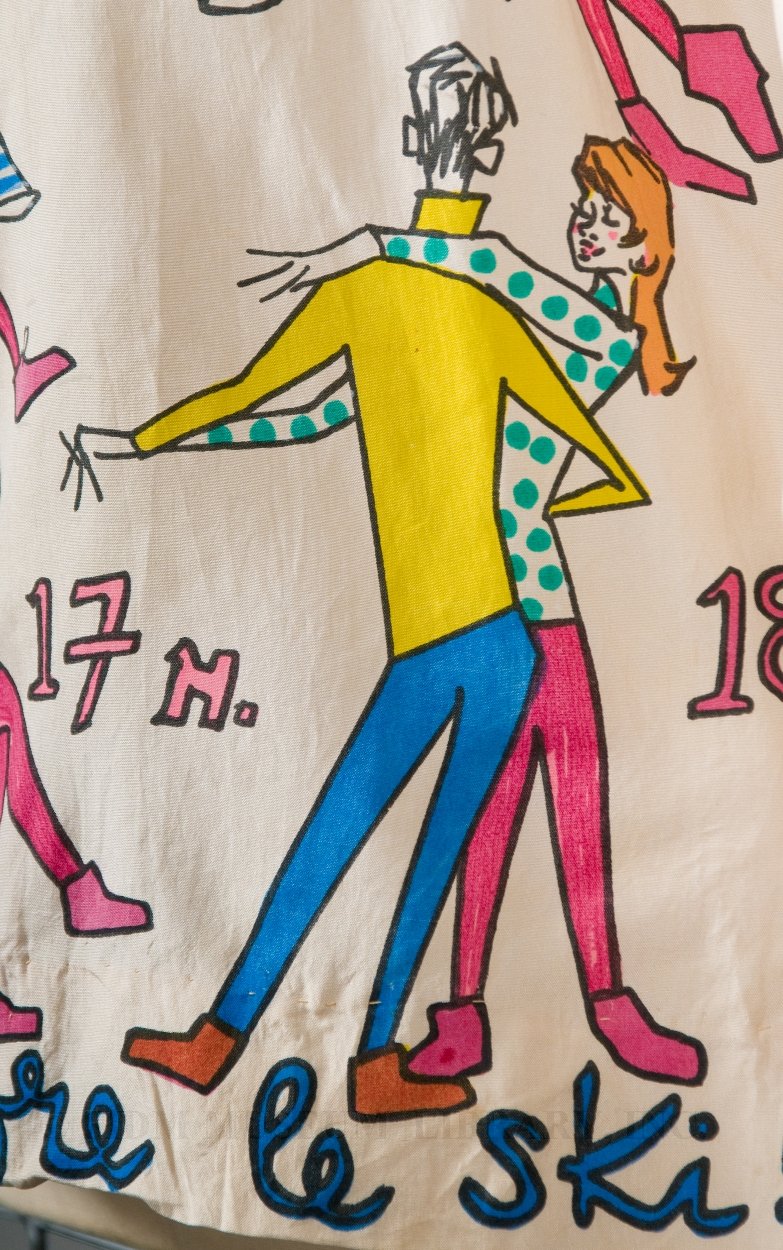Ski in fashion
 Blouse (detail) 1957-1960 Mr. Dino Gift of Steven Porterfield 2007.897.20
Blouse (detail) 1957-1960 Mr. Dino Gift of Steven Porterfield 2007.897.20
Until the 1950s, ski wear consisted of baggy woolen pants and knitted sweaters, topped with a bulky wool overcoat. Though warm and functional, these clothes did nothing to flatter the figure. This changed in 1952 with the introduction of Bogner ski pants. Created by Maria Bogner, member of a Swiss ski wear producing family, "Bogners" were a form-fitting ski pant made of wool and a newly developed nylon fiber called Helanca. By 1955, Bogners were available in a variety of bright colors. Because they displayed the muscular curves of both male and female skiers, Bogners were credited with introducing sex appeal to skiing. According to Ski magazine, "Marilyn Monroe, Ingrid Bergman and the Shah of Iran wore them. Henry Ford ordered 15 pairs. Overnight, skiing had been transformed into a sexy and very visible sport."1
Bogners appeared at the perfect moment, just as North Americans were experiencing unprecedented economic prosperity in the wake of World War II. Many individuals with surplus income turned their attention to the serious pursuit of sporting and leisure activities, such as skiing. Widespread interest in skiing was encouraged by simplifications in ski boots, skis and ski lifts, making it easier for a novice to get both up and down the mountain. At the end of the day, skiers could relax at comfortable resort lodgings, which often included spacious rooms for dining and dancing, along with heated outdoor pools. Skiing was now a fashionable activity, no longer limited to those rugged enough to withstand a cold slog through the snow.
The FIDM Museum ski-themed blouse seen here details the daily activity of a Bogner-clad skier on vacation. As you can see from the silk-screened images, actual skiing occupies only a portion of her day. Her brightly colored ski wear is typical of the late 1950s, when retailers offered ski wear in a variety of fashionable colors and patterns. Many urban department stores featured ski boutiques, and in 1959, at least one fashion writer suggested that ski wear would soon be seen both off and on the slopes. Not surprisingly, the slim silhouette of late 1950s ski wear echoed (or vice-versa) the slim pants then seen in casual sportswear.
1 Quoted in Needham, Richard. Ski: Fifty Years in North America. New York: Abrams. 1987: 64. The author refers to Henry Ford III, grandson of Henry Ford, who died in 1947.

